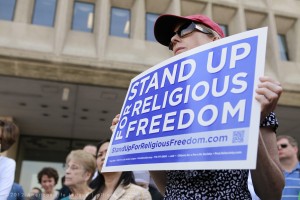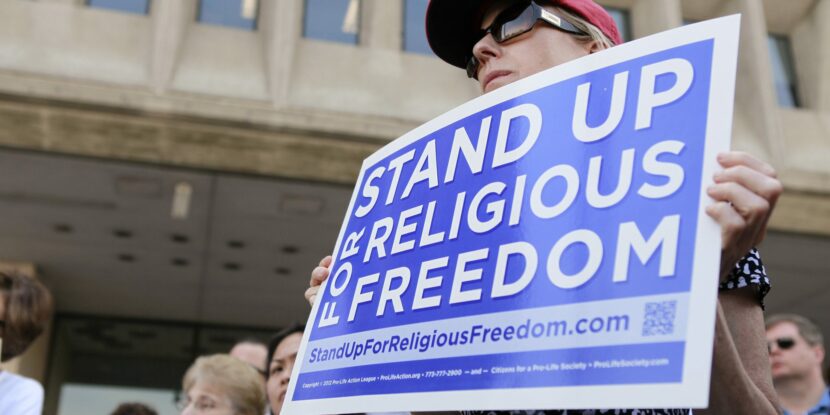
How did a bill defending religious liberty, which passed the Senate 97-3 and was signed into law by President Bill Clinton, become so controversial? This is the question posed in an op-ed published last Friday by the Los Angeles Times Editorial Board, examining recent liberal opposition to the Religious Freedom Restoration Act of 1993. The Times contends that the Supreme Court’s Hobby Lobby decision, as well as recent attempts to protect religious bakeries, for example, have made it clear that Congress must restrict religious freedom protections lest they “be used to justify discrimination.”
They admit the need for some religious accommodation: Muslim prisoners can grow beards, and Native Americans and Sikhs may keep ceremonial items related to their faith. But they draw the line at acting on any religious belief. Or, rather, refusing to act contrary to religious belief. Protecting outward signs of faith is fine, it seems, so long as the protection does not extend to acting on the convictions they signify.
They even claim to basically agree with RFRA, which established that the government may not substantially burden anyone’s free exercise of religion unless the burden furthers a compelling government interest and is the least restrictive means of doing so. But it is hard to imagine a more restrictive burden on religious belief than coercing adherents of the world’s major religions to act against thousands of years of religious teaching.
The Times proposes as remedies the Do No Harm Act and the Equality Act of 2015. The Do No Harm Act amends RFRA to deny application of the act to any federal law which “prevents harm to others,” including dignitary harm, as well as any law which provides for or requires “access to, information about, referrals for, provision of, or coverage for, any health care item or service.” The Christian Examiner points out some of the innumerable problems with this legislation, including the possibility that Christian hospitals could be shut down for not providing abortions.
The Equality Act goes even further, adding sexual orientation and gender identity to the list of protected classes in the Civil Rights Act of 1964 and barring RFRA from applying to any of it. It would immediately require any sex-segregated facility, such as a bathroom or locker room, to admit people on the basis of gender identity rather than biology. It would make opposition to same sex marriage or gender identity theory legally equivalent to racial discrimination, the implications of which are outlined in this article from The Daily Signal.
There is no justification presented in any of these cases for why federal law ought to be able to restrict free exercise of religion without a compelling government interest, or if a less restrictive alternative is available. The principle the LA Times seems to espouse is that the right to exercise one’s religion should not restrict the rights of others. But it offers no reason why other rights should be permitted to restrict the rights of religious conscience. It does away with RFRA’s attempt to balance these rights when they conflict, because it does not even allow for them to conflict. It barely seems to consider religious freedom a legitimate right.
The only possible choices remaining for adherents of nearly every religious tradition would be to publicly act against the teaching of their faith, or else leave the public square altogether.
Danny Cannon works for the American Principles Project.


